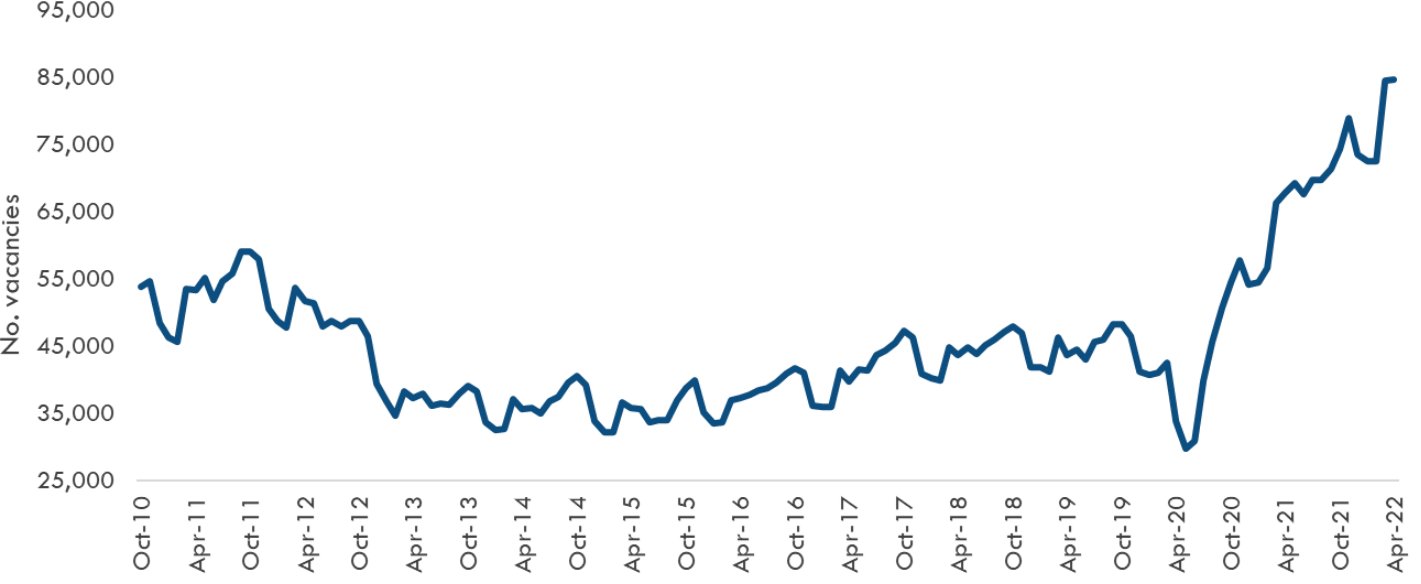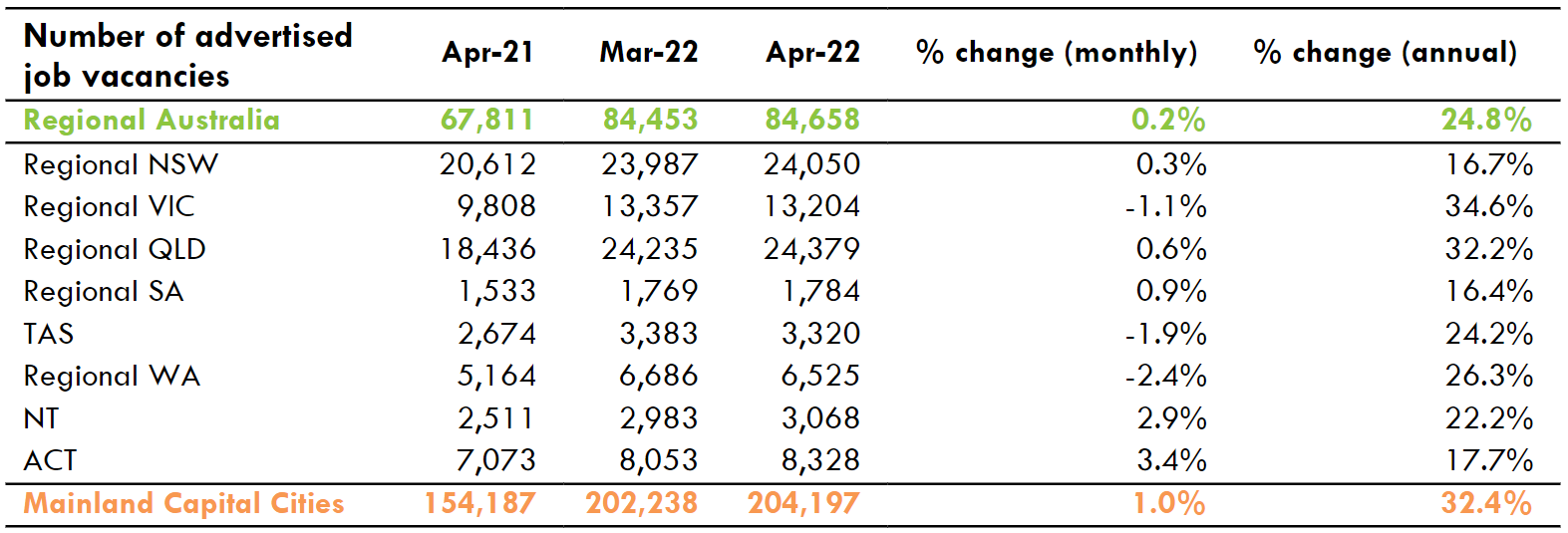Regional Labour Demand
Regional job vacancies remained steady at 84,600 in April 2022 with a 0.2 per cent increase on March. This total is 24.8 per cent more than a year earlier.
The top growth spots are scattered nationwide around South Australia, Northern Territory, Australian Capital Territory, New South Wales, and Queensland.
The advertised vacancies in all regions but one are well in excess of what was being advertised a year earlier. The annual growth in vacancies in the various regions are in the double digits, ranging from around 10 per cent to 59 per cent. The only region showing a smaller number of vacancies in April 2022 (1,392) compared with April 2021 (1,603) is Dubbo and Western NSW, a 13.2 per cent decline, but that point to point comparison masks the fact that the region is coming off a peak in vacancies in late 2021.

The five regions recording the largest monthly increases in vacancies from March to April 2022 were:
- Port Augusta & Eyre Peninsula with 5.9% more vacancies in April 2022 (630) than in March 2022 (595)
- Regional Northern Territory up by 4.5% (912 compared to 872)
- Canberra & ACT up by 3.4% (8,328 compared to 8,053)
- Blue Mountains, Bathurst & Central West NSW up by 3.0% (2,346 compared to 2,277)
- Gold Coast up by 2.6% (6,943 compared to 6,768)
The five regions with the biggest jumps in vacancies in April 2022 compared with April 2021 were:
- Outback Queensland up by 59.1%
- Geelong & Surf Coast up by 54.0%
- Sunshine Coast up by 38.9%
- Central Queensland up by 37.5%
- Gippsland up by 36.1%
In terms of the occupations being demanded, vacancies are largest for professional roles (24%) of all vacancies in April, followed by Technicians and Trades roles (16%), and Clerical and Administrative roles (14 %).

Regional Labour Supply
Full employment in many regions
Regions are splitting into those with stubbornly high unemployment and those where unemployment is exceptionally low. Policy and program responses need to be tailored to suit these very different circumstances.
Vacancies are a good indicator of labour demand, while unemployment trends help understand labour supply. In many regions unemployment is well under 2.5%. The five regions with the lowest unemployment rates over the last quarter are:

These rates signify full employment, and in these regions shortages of workers, and probably accommodation for workers, will be the main constraints. Policy and program responses need to enable and encourage more people to relocate into these regions.
At the other end of the spectrum, the five regions with the highest unemployment rates over the last quarter are:

In these regions there is still a sizeable pool of local people seeking work but their skills and interests are not well matched to the jobs available.
In each of these high-unemployment regions internet vacancies have been going up, suggesting that the demand for labour has been increasing, reflecting confidence among local businesses. In this environment policy and program responses should seek to make the most of the local workforce’s ability to take up jobs that are being created, rather than incentivize workers to relocate to the region. Policies and programs need to improve jobseeker skills and work readiness and improve connections between jobseekers and employers.
As the internet vacancy regions are quite large, it is important to look within these regions to understand pockets of low or high unemployment, or low or high vacancy growth so that policy and program responses can be suitably tailored within regions as well.